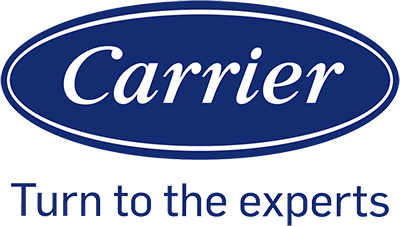Dust builds up in every home, but much of it hides where we can’t see it. Our air ducts collect dust over time, and that dust spreads through the air each time the system runs. Air duct cleaning reduces this buildup and helps keep less dust from circulating throughout the space.
When we keep ducts clean, we notice less dust settling on furniture and floors. This simple step not only cuts down on cleaning chores but also supports cleaner air in the rooms we use most. It’s a direct way to control dust before it spreads.
We’ll look at how clean ducts affect air quality, why dust matters for health, and how our HVAC systems perform better when buildup is removed. We’ll also share practical steps for keeping ducts cleaner for longer.
How Air Duct Cleaning Minimizes Dust Accumulation

Air ducts move air through our homes and workplaces, and they can easily carry dust with it. When we clean ducts properly, we reduce the amount of dust and debris that settles on surfaces and in the air we breathe.
The Role of Air Ducts in Dust Circulation
Air ducts act as pathways for heated or cooled air. As air moves through the system, it picks up particles such as dust, pollen, and small debris. These particles then circulate into different rooms.
If ducts are dirty, the airflow spreads more dust throughout the building. This can make surfaces dusty more quickly and may lower indoor air quality.
Clean ducts help reduce the amount of loose particles that move from one room to another. With less dust in circulation, we notice fewer layers of buildup on furniture and floors.
In many cases, even with regular cleaning of living spaces, dirty ducts keep reintroducing dust. This cycle continues until the ductwork itself is addressed.
Mechanisms of Dust Buildup in Ductwork
Dust buildup happens when particles settle inside the duct walls. Over time, layers of dust and debris form, especially in bends and joints where airflow slows down.
Common sources of this dust include:
- Household dust from fabrics, carpets, and skin cells
- Outdoor particles entering through vents and open windows
- Pet dander and hair carried by airflow
- Construction debris left behind in ductwork after renovations
Moisture can make the problem worse. If condensation forms inside ducts, particles stick more easily and create thicker buildup.
When filters clog or are not replaced often, more dust bypasses the filter and enters the ducts. This allows fine particles to collect deeper in the system, where they are harder to remove without professional duct cleaning.
How Professional Duct Cleaning Removes Dust and Debris
Professional air duct cleaning uses specialized tools to remove built-up dust and debris. The duct cleaning procedure often includes high-powered vacuuming with a HEPA filter to capture fine particles without releasing them back into the air.
Technicians may use rotating brushes or compressed air to loosen dust stuck to duct walls. Once loosened, the vacuum system pulls the particles into a sealed container.
Some duct cleaning services also clean registers, grilles, and other components. This ensures dust is not reintroduced into the system after cleaning.
By removing layers of buildup, professional duct cleaning restores cleaner airflow. With ducts free of heavy dust, less material circulates into rooms, which helps minimize dust accumulation on surfaces.
Impact of Dust Accumulation on Indoor Air Quality and Health
Dust that builds up in air ducts does more than make surfaces dirty. It can lower indoor air quality, carry allergens, and trigger health problems like asthma or allergies when left unchecked.
Effects on Indoor Air Quality
When dust particles collect in ducts, they circulate through the air every time we run the heating or cooling system. This increases the level of airborne particles we breathe in daily.
Poor indoor air quality often comes from a mix of dust, pollen, and pet dander. These particles stay in the air longer in closed spaces, especially when ventilation is weak.
We may notice more frequent dust settling on furniture, electronics, and floors. This is a sign that our system is distributing particles instead of trapping them.
Key contributors to poor air quality include:
- Dust particles
- Pollen
- Pet dander
- Mold spores
Cleaner ducts reduce these pollutants, making the air easier to breathe and lowering the need for constant dusting.
Allergens, Mold, and Respiratory Issues
Dust often carries allergens like pollen and pet dander that can trigger allergy symptoms. These include sneezing, itchy eyes, and congestion. For people with asthma, breathing in these particles may worsen respiratory problems.
Moisture inside ducts can also lead to mold growth. Once mold develops, it releases spores into the air. Breathing in mold spores may irritate the lungs and cause coughing or wheezing.
Children, older adults, and people with existing respiratory issues are more sensitive to these conditions. Even those without chronic issues may notice discomfort when exposed to high levels of allergens and mold.
By keeping ducts clean, we lower the spread of these irritants and support healthier breathing indoors.
Signs Your Air Ducts Need Cleaning
We can often spot signs that dust in our ducts is affecting air quality. Common indicators include:
- Visible dust blowing from vents
- Musty odors when the system runs
- Frequent allergy symptoms indoors
- Uneven airflow or blocked vents
If we notice mold around vent covers or smell damp, earthy odors, this may point to mold growth inside the ducts.
Another sign is an increase in dust buildup on shelves and floors soon after cleaning. This means the system is pushing out particles instead of trapping them.
Paying attention to these signals helps us decide when it is time to schedule a professional duct cleaning.
Benefits of Air Duct Cleaning for HVAC System Performance
When we keep air ducts free of dust and buildup, our heating and cooling system runs more smoothly. Clean ducts help maintain steady airflow, reduce strain on equipment, and support better energy efficiency over time.
Improved Airflow and HVAC Efficiency
Dust, dirt, and debris inside ducts can block airflow. When airflow is restricted, the HVAC system must work harder to push warm or cool air through the vents. This extra strain lowers efficiency and can cause uneven temperatures in different rooms.
By cleaning ducts, we allow air to move freely through the system. Better airflow means the heating and cooling system can reach the set temperature faster and keep it stable without constant cycling. This improves comfort while reducing unnecessary wear on parts like the blower motor and fan.
Clean ducts also help filters last longer. When less dust circulates through the system, filters do not clog as quickly. This makes routine HVAC maintenance easier and helps the system stay efficient between filter changes.
Lower Energy Bills and Prolonged System Lifespan
When airflow improves, the system does not need to use as much energy to heat or cool the home. This can lower monthly energy bills, especially during peak seasons when the system runs more often. Even small gains in efficiency can add up to noticeable savings over a year.
Less strain on equipment also means fewer breakdowns. Components such as the compressor, fan, and motor face less stress when ducts remain clean. With regular air duct cleaning, we reduce the chances of costly repairs and extend the lifespan of the HVAC system.
In practical terms:
- Lower energy use = reduced costs
- Less wear on parts = fewer repairs
- Cleaner airflow = better long-term performance
By keeping ducts clear, we make sure our heating and cooling system delivers reliable service for many years.
Best Practices for Minimizing Dust in Air Ducts
We can reduce dust buildup by focusing on the quality of air filters, keeping ducts and vents clean, and paying attention to the conditions inside our homes. Small adjustments in these areas help limit the amount of debris that circulates through our system.
Air Filter Selection and Replacement
The type of air filter we use has a direct effect on dust levels. HEPA filters capture smaller particles than standard filters, which helps keep dust from entering the ducts. For most homes, a filter with a higher MERV rating provides better filtration without restricting airflow.
We should replace filters on a regular schedule. In most cases, every 1-3 months works best, but homes with pets or high dust levels may need more frequent changes. Keeping a simple reminder system, such as marking a calendar, helps us stay consistent.
It’s also important to check that filters fit correctly. A loose or poorly sized filter allows air to bypass the material, which reduces its effectiveness. By choosing the right type and replacing it often, we reduce the amount of dust that collects in the ducts.
Routine Maintenance and Cleaning Strategies
Dust often gathers around air vents and can be pulled into the system if not cleaned. Wiping vent covers with a damp cloth and vacuuming around them prevents buildup. Using a vacuum with a HEPA filter is more effective because it traps fine particles instead of releasing them back into the air.
Flexible duct sections can trap more dust than rigid ducts because of their ridges. Inspecting these areas and gently cleaning them when possible helps reduce accumulation. We should also make sure ducts remain sealed and free of gaps where dust can enter.
Scheduling professional cleaning every few years may be necessary if we notice visible dust, mold, or restricted airflow. Between these cleanings, basic steps like vacuuming floors regularly and keeping vents clear of obstructions help control the amount of dust entering the system.
Addressing Environmental and Lifestyle Factors
The conditions in our home also affect how much dust ends up in the ducts. Pets, for example, shed dander and hair that easily travel through vents. Grooming pets often and vacuuming floors with a HEPA-equipped vacuum reduces the amount that enters the system.
Humidity plays a role as well. Low humidity allows dust to stay airborne longer, while very high humidity can cause particles to stick to duct surfaces. Using a humidifier or dehumidifier to maintain balanced indoor air helps manage these issues.
We can also limit dust by reducing clutter and using doormats to trap dirt before it spreads indoors. These simple steps, combined with regular filter changes and vent cleaning, make it easier to keep ducts clear and minimize dust buildup.




